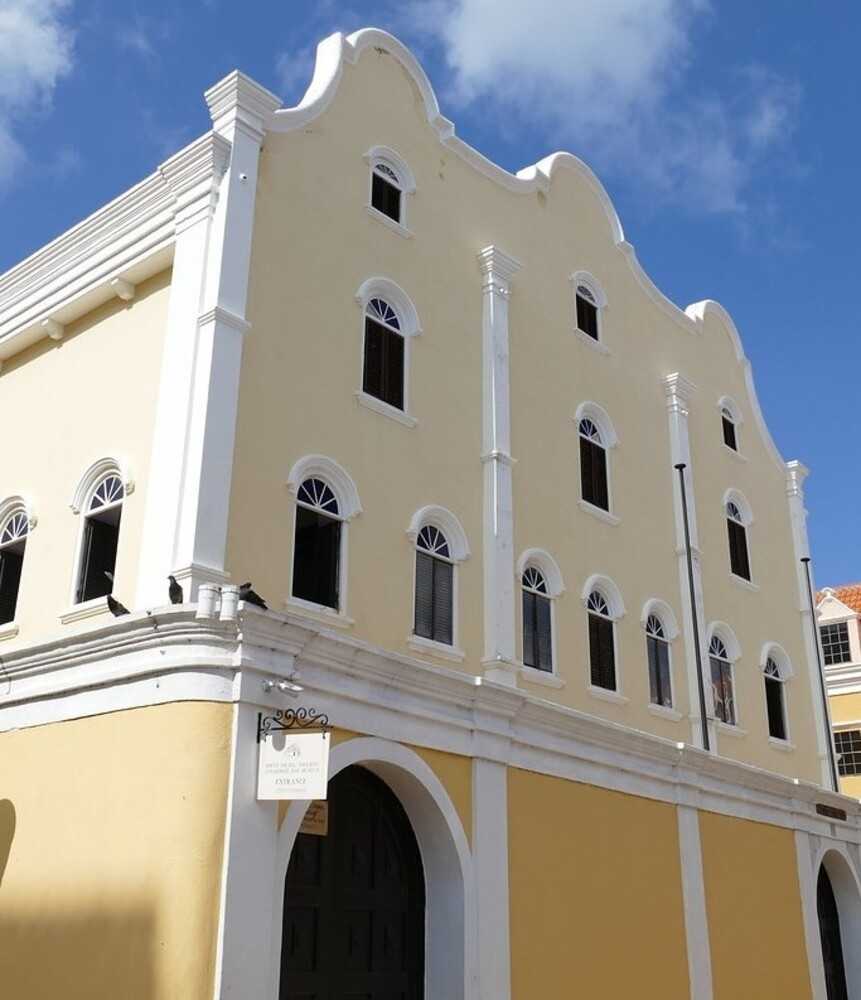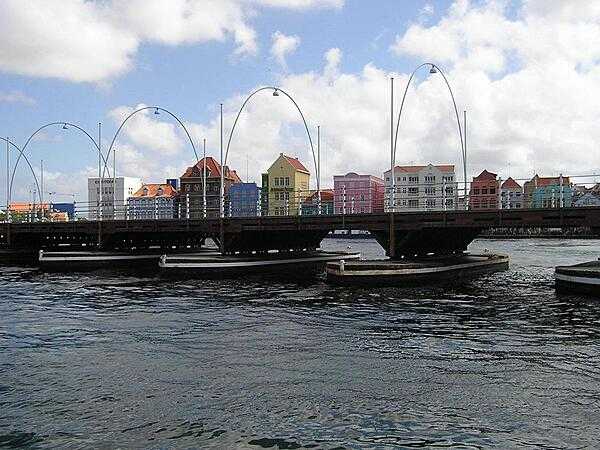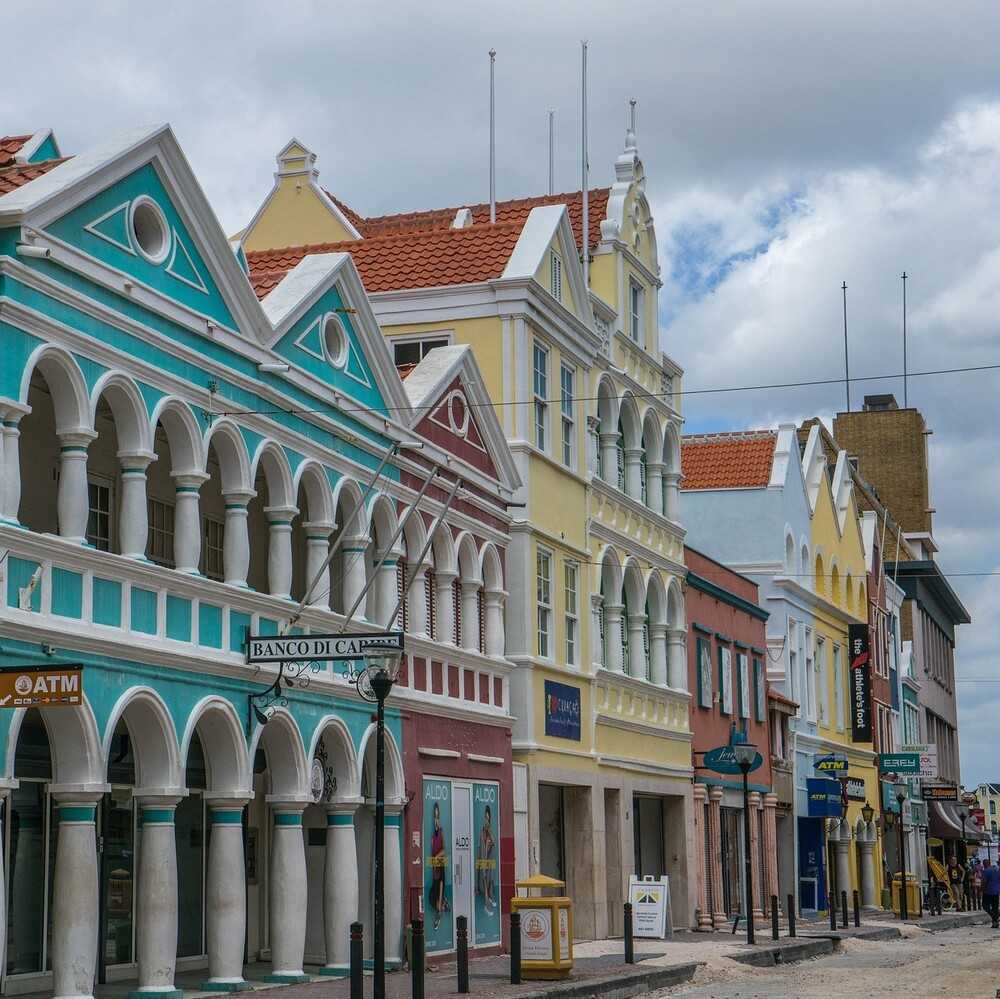Curaçao - CW - CUW - Central America and the Caribbean
Last updated: December 12, 2025
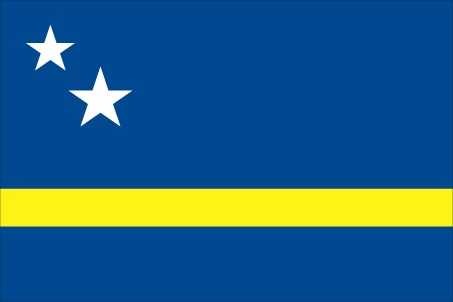
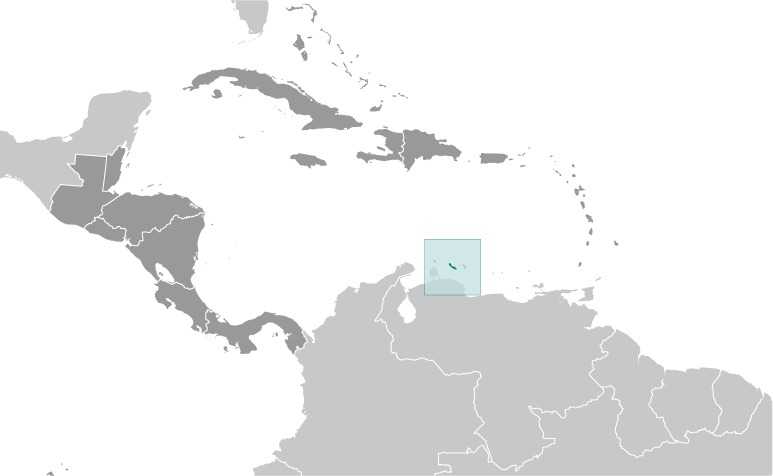

Curacao Images
Curacao Factbook Data
Legislative branch
legislature name: Parliament of Curacao
legislative structure: unicameral
number of seats: 21 (directly elected)
electoral system: proportional representation
scope of elections: full renewal
term in office: 4 years
most recent election date: 3/19/2021
parties elected and seats per party: MFK (9); PAR (4); PNP (4); MAN (2); KEM (1); TPK (1)
percentage of women in chamber: 28.6%
expected date of next election: 2025
legislative structure: unicameral
number of seats: 21 (directly elected)
electoral system: proportional representation
scope of elections: full renewal
term in office: 4 years
most recent election date: 3/19/2021
parties elected and seats per party: MFK (9); PAR (4); PNP (4); MAN (2); KEM (1); TPK (1)
percentage of women in chamber: 28.6%
expected date of next election: 2025
Exchange rates
Netherlands Antillean guilders (ANG) per US dollar -
Exchange rates:
1.79 (2024 est.)
1.79 (2023 est.)
1.79 (2022 est.)
1.79 (2021 est.)
1.79 (2020 est.)
Exchange rates:
1.79 (2024 est.)
1.79 (2023 est.)
1.79 (2022 est.)
1.79 (2021 est.)
1.79 (2020 est.)
Background
The original Arawak Indian settlers who arrived on Curaçao from South America in about A.D. 1000 were largely enslaved by the Spanish early in the 16th century and forcibly relocated to other colonies where labor was needed. The Dutch seized Curaçao from the Spanish in 1634. Once the center of the Caribbean slave trade, Curaçao was hard hit economically when the Dutch abolished slavery in 1863. Its prosperity (and that of neighboring Aruba) was restored in the early 20th century with the construction of the Isla Refineria to service the newly discovered Venezuelan oilfields. In 1954, Curaçao and several other Dutch Caribbean colonies were reorganized as the Netherlands Antilles, part of the Kingdom of the Netherlands. In referenda in 2005 and 2009, the citizens of Curaçao voted to become a self-governing country within the Kingdom of the Netherlands. The change in status became effective in 2010 with the dissolution of the Netherlands Antilles.
Location
Caribbean, an island in the Caribbean Sea, 55 km off the coast of Venezuela
Flag
description: on a blue field, a horizontal yellow band divides the flag below the center; two five-pointed white stars -- the smaller above and to the left of the larger -- appear in the upper left
meaning: the blue stands for the sky and sea, and yellow for the sun; the stars symbolize Curacao and its uninhabited sister island of Klein Curacao (Little Curacao); the star points represent the five continents from which Curacao's inhabitants originate
meaning: the blue stands for the sky and sea, and yellow for the sun; the stars symbolize Curacao and its uninhabited sister island of Klein Curacao (Little Curacao); the star points represent the five continents from which Curacao's inhabitants originate
Dependency status
one of four constituent countries of the Kingdom of the Netherlands; full autonomy in internal affairs granted in 2010; Dutch government responsible for defense and foreign affairs
note: the other three constituent countries in the Kingdom of the Netherlands are the Netherlands, Aruba, and Sint Maarten
note: the other three constituent countries in the Kingdom of the Netherlands are the Netherlands, Aruba, and Sint Maarten
Diplomatic representation from the US
chief of mission: Consul General Ramón “Chico” NEGRÓN (since 9 June 2025); note - also accredited to Aruba and Sint Maarten
embassy: P.O. Box 158, J.B. Gorsiraweg 1
mailing address: 3160 Curacao Place, Washington DC 20521-3160
telephone: [599] (9) 461-3066
FAX: [599] (9) 461-6489
email address and website:
ACSCuracao@state.gov
https://cw.usconsulate.gov/
embassy: P.O. Box 158, J.B. Gorsiraweg 1
mailing address: 3160 Curacao Place, Washington DC 20521-3160
telephone: [599] (9) 461-3066
FAX: [599] (9) 461-6489
email address and website:
ACSCuracao@state.gov
https://cw.usconsulate.gov/
Age structure
0-14 years: 19.2% (male 15,069/female 14,337)
15-64 years: 62.3% (male 47,258/female 48,217)
65 years and over: 18.5% (2024 est.) (male 11,428/female 16,980)
15-64 years: 62.3% (male 47,258/female 48,217)
65 years and over: 18.5% (2024 est.) (male 11,428/female 16,980)
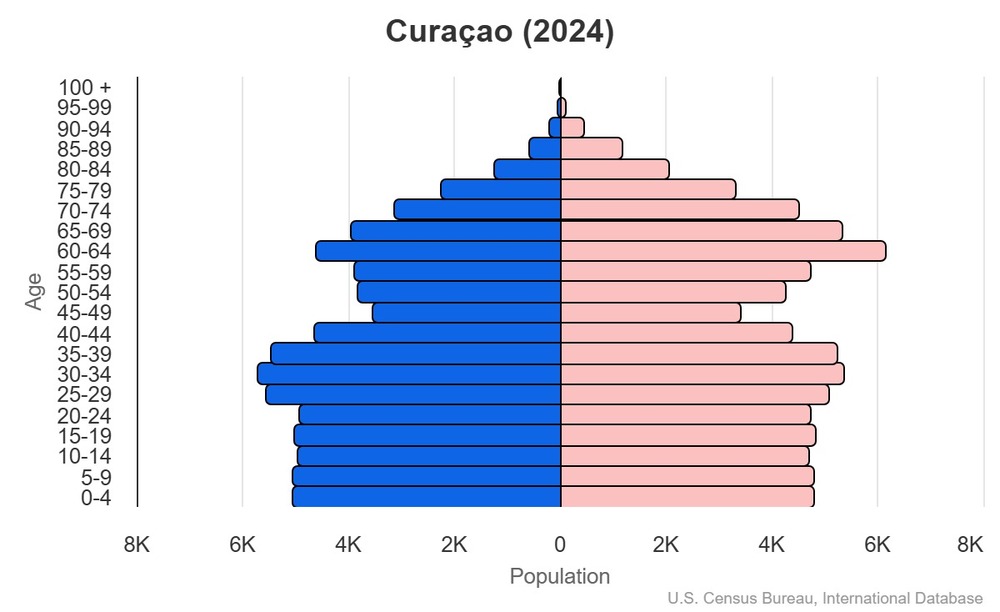
This is the population pyramid for Curacao. A population pyramid illustrates the age and sex structure of a country's population and may provide insights about political and social stability, as well as economic development. The population is distributed along the horizontal axis, with males shown on the left and females on the right. The male and female populations are broken down into 5-year age groups represented as horizontal bars along the vertical axis, with the youngest age groups at the bottom and the oldest at the top. The shape of the population pyramid gradually evolves over time based on fertility, mortality, and international migration trends.
For additional information, please see the entry for Population pyramid on the Definitions and Notes page.
For additional information, please see the entry for Population pyramid on the Definitions and Notes page.
Geographic coordinates
12 10 N, 69 00 W
Sex ratio
at birth: 1.05 male(s)/female
0-14 years: 1.05 male(s)/female
15-64 years: 0.98 male(s)/female
65 years and over: 0.67 male(s)/female
total population: 0.93 male(s)/female (2024 est.)
0-14 years: 1.05 male(s)/female
15-64 years: 0.98 male(s)/female
65 years and over: 0.67 male(s)/female
total population: 0.93 male(s)/female (2024 est.)
Natural hazards
Curacao is south of the Caribbean hurricane belt and is rarely threatened
Area - comparative
more than twice the size of Washington, D.C.
Environmental issues
waste management, including pollution of marine areas from domestic sewage, inadequate sewage treatment facilities, industrial effluents, agricultural runoff, mismanagement of toxic substances, and ineffective regulations; damage from neglect and a lack of controls at major refinery
Military and security forces
Curaçao Militia (CURMIL); Curaçao Volunteer Corps; Curacao Police Force (Korps Politie Curacao) (2025)
Capital
name: Willemstad
geographic coordinates: 12 06 N, 68 55 W
time difference: UTC-4 (1 hour ahead of Washington, DC, during Standard Time)
etymology: the name means "William's Town" in Dutch; named after Prince WILLEM of Orange (1533-84), the first stadtholder of the United Provinces of the Netherlands
geographic coordinates: 12 06 N, 68 55 W
time difference: UTC-4 (1 hour ahead of Washington, DC, during Standard Time)
etymology: the name means "William's Town" in Dutch; named after Prince WILLEM of Orange (1533-84), the first stadtholder of the United Provinces of the Netherlands
Climate
tropical marine climate, ameliorated by northeast trade winds, results in mild temperatures; semiarid with average rainfall of 60 cm/year
Coastline
364 km
Constitution
history: previous 1947, 1955; latest adopted 5 September 2010, entered into force 10 October 2010 (regulates governance of Curacao but is subordinate to the Charter for the Kingdom of the Netherlands)
Ethnic groups
Curacaoan 75.4%, Dutch 6%, Dominican 3.6%, Colombian 3%, Bonairean, Sint Eustatian, Saban 1.5%, Haitian 1.2%, Surinamese 1.2%, Venezuelan 1.1%, Aruban 1.1%, other 5%, unspecified 0.9% (2011 est.)
Executive branch
chief of state: King WILLEM-ALEXANDER of the Netherlands (since 30 April 2013); represented by Governor Lucille A. GEORGE-WOUT (since 4 November 2013)
head of government: Prime Minister Gilmar PISAS (since 14 June 2021)
cabinet: Cabinet sworn-in by the governor
election/appointment process: the monarch is hereditary; governor appointed by the monarch; following legislative elections, the legislature usually elects the leader of the majority party as prime minister
most recent election date: 21 March 2025
expected date of next election: 2029
head of government: Prime Minister Gilmar PISAS (since 14 June 2021)
cabinet: Cabinet sworn-in by the governor
election/appointment process: the monarch is hereditary; governor appointed by the monarch; following legislative elections, the legislature usually elects the leader of the majority party as prime minister
most recent election date: 21 March 2025
expected date of next election: 2029
Independence
none (part of the Kingdom of the Netherlands)
Judicial branch
highest court(s): Joint Court of Justice of Aruba, Curacao, Sint Maarten, and of Bonaire, Sint Eustatius and Saba or "Joint Court of Justice" (sits as a 3-judge panel); final appeals heard by the Supreme Court in The Hague, Netherlands
judge selection and term of office: Joint Court judges appointed by the monarch for life
subordinate courts: first instance courts, appeals court; specialized courts
judge selection and term of office: Joint Court judges appointed by the monarch for life
subordinate courts: first instance courts, appeals court; specialized courts
Land boundaries
total: 0 km
Land use
agricultural land: 0% (2022 est.)
arable land: 10% (2018)
forest: 0.2% (2022 est.)
other: 99.8% (2022 est.)
arable land: 10% (2018)
forest: 0.2% (2022 est.)
other: 99.8% (2022 est.)
Languages
Papiamento (official) (a creole language that is a mixture of Portuguese, Spanish, Dutch, English, and, to a lesser extent, French, as well as elements of African languages and the language of the Arawak) 80%, Dutch (official) 8.8%, Spanish 5.6%, English (official) 3.1%, other 2.3%, unspecified 0.3% (2011 est.)
note: data represent most spoken language in household
note: data represent most spoken language in household
Legal system
based on Dutch civil law
Maritime claims
territorial sea: 12 nm
exclusive economic zone: 200 nm
exclusive economic zone: 200 nm
International organization participation
ACS (associate), Caricom (observer), FATF, ILO, ITU, UNESCO (associate), UPU
National holiday
King's Day (birthday of King WILLEM-ALEXANDER), 27 April (1967)
note: King's or Queen's Day are observed on the ruling monarch's birthday; celebrated on 26 April if 27 April is a Sunday
note: King's or Queen's Day are observed on the ruling monarch's birthday; celebrated on 26 April if 27 April is a Sunday
Nationality
noun: Curacaoan
adjective: Curacaoan; Dutch
adjective: Curacaoan; Dutch
Natural resources
calcium phosphates, protected harbors, hot springs
Geography - note
Curaçao is a part of the Windward Islands (southern) group in the Lesser Antilles
Political parties
Korsou di Nos Tur or KdnT
Korsou Esun Miho or KEM
Movementu Futuro Korsou or MFK
Movementu Progresivo or MP
Movishon Antia Nobo or MAN
Partido Antia Restruktura or PAR
Partido Inovashon Nashonal or PIN
Partido Nashonal di Pueblo or PNP
Pueblo Soberano or PS
Trabou pa Kòrsou or TPK
Un Korsou Hustu
Korsou Esun Miho or KEM
Movementu Futuro Korsou or MFK
Movementu Progresivo or MP
Movishon Antia Nobo or MAN
Partido Antia Restruktura or PAR
Partido Inovashon Nashonal or PIN
Partido Nashonal di Pueblo or PNP
Pueblo Soberano or PS
Trabou pa Kòrsou or TPK
Un Korsou Hustu
Religions
Roman Catholic 72.8%, Pentecostal 6.6%, Protestant 3.2%, Adventist 3%, Jehovah's Witness 2%, Evangelical 1.9%, other 3.8%, none 6%, unspecified 0.6% (2011 est.)
Suffrage
18 years of age; universal
Terrain
generally low, hilly terrain
Government type
parliamentary democracy
Military - note
defense is the responsibility of the Kingdom of the Netherlands; the Dutch Government controls foreign and defense policy; local security forces are supported by the Royal Netherlands Marechaussee (Gendarmerie), the Dutch Caribbean Police Force (Korps Politie Caribisch Nederland, KPCN), and the Dutch Caribbean Coast Guard (DCCG or Kustwacht Caribisch Gebied (KWCARIB)); there are two Dutch naval bases on Curaçao, and the Dutch Army maintains a small unit on a rotational basis (2025)
Country name
conventional long form: Country of Curacao
conventional short form: Curacao
local long form: Land Curacao (Dutch)/ Pais Korsou (Papiamento)
local short form: Curacao (Dutch)/ Korsou (Papiamento)
former: Netherlands Antilles; Curacao and Dependencies
etymology: the origin of the name is disputed; many historians now agree that the name derives from a similar-sounding word the original inhabitants used to describe themselves
conventional short form: Curacao
local long form: Land Curacao (Dutch)/ Pais Korsou (Papiamento)
local short form: Curacao (Dutch)/ Korsou (Papiamento)
former: Netherlands Antilles; Curacao and Dependencies
etymology: the origin of the name is disputed; many historians now agree that the name derives from a similar-sounding word the original inhabitants used to describe themselves
Map references
Central America and the Caribbean
Irrigated land
NA
Diplomatic representation in the US
none (represented by the Kingdom of the Netherlands)
Internet users
percent of population: 68% (2017 est.)
Internet country code
.cw
Urbanization
urban population: 89% of total population (2023)
rate of urbanization: 0.57% annual rate of change (2020-25 est.)
rate of urbanization: 0.57% annual rate of change (2020-25 est.)
Broadcast media
government-run TeleCuracao operates a TV station and a radio station; 2 other privately owned TV stations and several privately owned radio stations (2019)
National anthem(s)
title: "Himmo di Korsou" (Anthem of Curacao)
lyrics/music: Guillermo ROSARIO, Mae HENRIQUEZ, Enrique MULLER, Betty DORAN/Frater Candidus NOWENS, Errol "El Toro" COLINA
history: adapted 1978; the lyrics, originally written in 1899, were rewritten in 1978 to remove colonial references
lyrics/music: Guillermo ROSARIO, Mae HENRIQUEZ, Enrique MULLER, Betty DORAN/Frater Candidus NOWENS, Errol "El Toro" COLINA
history: adapted 1978; the lyrics, originally written in 1899, were rewritten in 1978 to remove colonial references
Major urban areas - population
144,000 WILLEMSTAD (capital) (2018)
National symbol(s)
laraha (citrus tree)
Dependency ratios
total dependency ratio: 60.6 (2024 est.)
youth dependency ratio: 30.8 (2024 est.)
elderly dependency ratio: 29.8 (2024 est.)
potential support ratio: 3.4 (2024 est.)
youth dependency ratio: 30.8 (2024 est.)
elderly dependency ratio: 29.8 (2024 est.)
potential support ratio: 3.4 (2024 est.)
Population distribution
largest concentration on the island is Willemstad; smaller settlements near the coast can be found throughout the island, particularly in the northwest
Electricity access
electrification - total population: 100% (2022 est.)
Civil aircraft registration country code prefix
PJ
Imports - partners
USA 39%, Netherlands 24%, China 6%, Colombia 5%, Brazil 3% (2023)
note: top five import partners based on percentage share of imports
note: top five import partners based on percentage share of imports
Economic overview
high-income island economy; developed infrastructure; tourism and financial services-based economy; investing in information technology incentives; oil refineries service Venezuela and China
GDP (official exchange rate)
$3.281 billion (2023 est.)
note: data in current dollars at official exchange rate
note: data in current dollars at official exchange rate
GDP - composition, by end use
household consumption: 73.2% (2018 est.)
government consumption: 14.5% (2018 est.)
investment in fixed capital: 34% (2018 est.)
investment in inventories: 7.1% (2018 est.)
exports of goods and services: 63.2% (2018 est.)
imports of goods and services: -92% (2018 est.)
note: figures may not total 100% due to rounding or gaps in data collection
government consumption: 14.5% (2018 est.)
investment in fixed capital: 34% (2018 est.)
investment in inventories: 7.1% (2018 est.)
exports of goods and services: 63.2% (2018 est.)
imports of goods and services: -92% (2018 est.)
note: figures may not total 100% due to rounding or gaps in data collection
Agricultural products
aloe, sorghum, peanuts, vegetables, tropical fruit
Industries
tourism, petroleum refining, petroleum transshipment, light manufacturing, financial and business services
Exports - commodities
diamonds, refined petroleum, crude petroleum, gold, petroleum coke (2023)
note: top five export commodities based on value in dollars
note: top five export commodities based on value in dollars
Imports - commodities
refined petroleum, cars, garments, plastic products, packaged medicine (2023)
note: top five import commodities based on value in dollars
note: top five import commodities based on value in dollars
Elevation
highest point: Mt. Christoffel 372 m
lowest point: Caribbean Sea 0 m
lowest point: Caribbean Sea 0 m
Exports - partners
Armenia 57%, USA 15%, Guyana 5%, Dominican Republic 4%, Netherlands 2% (2023)
note: top five export partners based on percentage share of exports
note: top five export partners based on percentage share of exports
Waste and recycling
municipal solid waste generated annually: 24,700 tons (2024 est.)
National heritage
total World Heritage Sites: 1 (cultural); note - excerpted from the Netherlands entry
selected World Heritage Site locales: Historic Willemstad
selected World Heritage Site locales: Historic Willemstad
Gross reproduction rate
0.96 (2024 est.)
Remittances
5.4% of GDP (2023 est.)
5.2% of GDP (2022 est.)
5.2% of GDP (2021 est.)
note: personal transfers and compensation between resident and non-resident individuals/households/entities
5.2% of GDP (2022 est.)
5.2% of GDP (2021 est.)
note: personal transfers and compensation between resident and non-resident individuals/households/entities
Ports
total ports: 4 (2024)
large: 0
medium: 2
small: 1
very small: 1
ports with oil terminals: 3
key ports: Bullenbaai, Caracasbaai, Sint Michelsbaai, Willemstad
large: 0
medium: 2
small: 1
very small: 1
ports with oil terminals: 3
key ports: Bullenbaai, Caracasbaai, Sint Michelsbaai, Willemstad
National color(s)
blue, yellow, white
Net migration rate
-1.3 migrant(s)/1,000 population (2024 est.)
Median age
total: 37.8 years (2024 est.)
male: 35.5 years
female: 40.2 years
male: 35.5 years
female: 40.2 years
Total fertility rate
1.96 children born/woman (2024 est.)
Population
total: 153,289 (2024 est.)
male: 73,755
female: 79,534
male: 73,755
female: 79,534
Area
total : 444 sq km
land: 444 sq km
water: 0 sq km
land: 444 sq km
water: 0 sq km
Real GDP (purchasing power parity)
$4.312 billion (2023 est.)
$4.138 billion (2022 est.)
$3.834 billion (2021 est.)
note: data in 2021 dollars
$4.138 billion (2022 est.)
$3.834 billion (2021 est.)
note: data in 2021 dollars
Airports
1 (2025)
Infant mortality rate
total: 7.5 deaths/1,000 live births (2024 est.)
male: 8.3 deaths/1,000 live births
female: 6.7 deaths/1,000 live births
male: 8.3 deaths/1,000 live births
female: 6.7 deaths/1,000 live births
Telephones - mobile cellular
total subscriptions: 172,000 (2022 est.)
subscriptions per 100 inhabitants: 88 (2021 est.)
subscriptions per 100 inhabitants: 88 (2021 est.)
Inflation rate (consumer prices)
2.6% (2019 est.)
2.6% (2018 est.)
1.6% (2017 est.)
note: annual % change based on consumer prices
2.6% (2018 est.)
1.6% (2017 est.)
note: annual % change based on consumer prices
Current account balance
-$654.688 million (2023 est.)
-$822.667 million (2022 est.)
-$508.758 million (2021 est.)
note: balance of payments - net trade and primary/secondary income in current dollars
-$822.667 million (2022 est.)
-$508.758 million (2021 est.)
note: balance of payments - net trade and primary/secondary income in current dollars
Real GDP per capita
$27,700 (2023 est.)
$27,600 (2022 est.)
$25,200 (2021 est.)
note: data in 2021 dollars
$27,600 (2022 est.)
$25,200 (2021 est.)
note: data in 2021 dollars
Broadband - fixed subscriptions
total: 61,000 (2022 est.)
subscriptions per 100 inhabitants: 33 (2022 est.)
subscriptions per 100 inhabitants: 33 (2022 est.)
Death rate
8.9 deaths/1,000 population (2024 est.)
Birth rate
12.9 births/1,000 population (2024 est.)
Merchant marine
total: 57 (2023)
by type: general cargo 5, oil tanker 1, other 51
by type: general cargo 5, oil tanker 1, other 51
Imports
$2.764 billion (2023 est.)
$2.891 billion (2022 est.)
$1.91 billion (2021 est.)
note: balance of payments - imports of goods and services in current dollars
$2.891 billion (2022 est.)
$1.91 billion (2021 est.)
note: balance of payments - imports of goods and services in current dollars
Exports
$2.107 billion (2023 est.)
$2.046 billion (2022 est.)
$1.363 billion (2021 est.)
note: balance of payments - exports of goods and services in current dollars
$2.046 billion (2022 est.)
$1.363 billion (2021 est.)
note: balance of payments - exports of goods and services in current dollars
Telephones - fixed lines
total subscriptions: 51,000 (2022 est.)
subscriptions per 100 inhabitants: 27 (2022 est.)
subscriptions per 100 inhabitants: 27 (2022 est.)
Life expectancy at birth
total population: 79.9 years (2024 est.)
male: 77.6 years
female: 82.3 years
male: 77.6 years
female: 82.3 years
Real GDP growth rate
4.2% (2023 est.)
7.9% (2022 est.)
4.2% (2021 est.)
note: annual GDP % growth based on constant local currency
7.9% (2022 est.)
4.2% (2021 est.)
note: annual GDP % growth based on constant local currency
GDP - composition, by sector of origin
agriculture: 0.3% (2023 est.)
industry: 11.7% (2023 est.)
services: 73.3% (2023 est.)
note: figures may not total 100% due to non-allocated consumption not captured in sector-reported data
industry: 11.7% (2023 est.)
services: 73.3% (2023 est.)
note: figures may not total 100% due to non-allocated consumption not captured in sector-reported data
Education expenditure
7.4% of GDP (2020 est.)
Population growth rate
0.28% (2024 est.)
